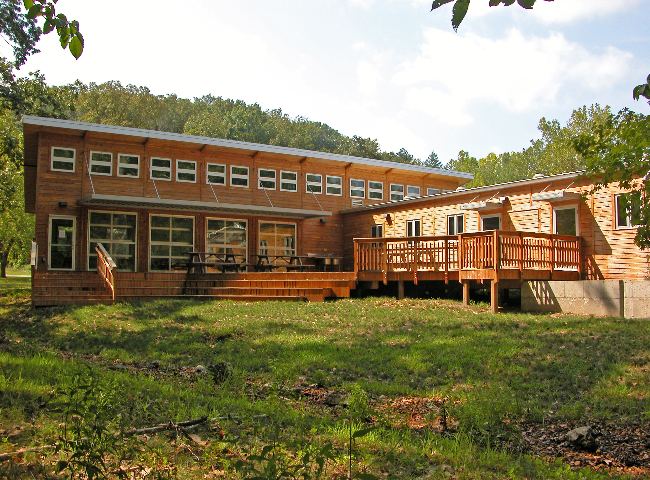Does your school cause asthma?

A viral video got around last week that parodied Carly Rae Jepsen's top-40 tune, "Call Me, Maybe." It wasn't all that funny, because environmentalists -- like The League of Conservation Voters, which produced the mock music video -- aren't so humorous to begin with.

But the message behind "Test It, Maybe" was serious. The LCV was essentially asking why, since 1976, the Toxic Substance Control Act has put the burden of proof on the EPA that a given chemical is dangerous.
Instead, environmentalists and green building advocates are behind the new Safe Chemicals Act, which provides real health protections from industrial poisons. It passed a key Senate committee in July, but has languished since. We're knee-deep in politics season, after all.
In synch with the times, recently a green building group launched a new "nutrition label" for buildings, a certification called Declare. Good news.
Greener buildings for less asthma
Remedying our chemical dependency, to turn a phrase, is an essential part of the green building movement. Architects who are into sustainability should look into Declare and learn about the Safe Chemicals Act -- and sing loudly for its passage into law.
Perkins+Will is already on the job. "The Safe Chemicals Act is an essential piece of legislation for the building materials industry," says Peter Syrett, an associate principal with the firm. He says his firm is "moving away from hazardous chemicals" and that this move can actually be profitable.
Last month the firm revised its own list of suspected chemical dangers in the built environment. By compiling peer-reviewed research, Perkins+Will lists 374 known asthmagens, as part of the firm’s Transparency Project. Their aim? Healthier schools, homes, workplaces and public places.
Buildings use a small portion of the 80,000 chemicals produced by U.S. industry. But of all those thousands, only 200 have been tested, wrote Margie Kelly in the Huffington Post.
The Red List
So except for killers like arsenic and the general category of volatile organic compounds (VOCs), its hard to know what asthmagens or similar suspected evils are inside a carpet, paint, wood, insulation or construction adhesive.
Even better than Transparency Project is the materials Red List, a project of the International Living Future Institute, which promotes super-green, ultra-healthy buildings through its "Living Building Challenge." The group just launched their nicely concocted "nutrition label" for buildings, a project it calls Declare. (Visit www.declareproducts.com and have a look.)
The link between school buildings and asthma is a mysterious one, but many scientists have pointed to a causal connection.
Yet on EPA's own website, the agency describes cigarette smoke, cockroach droppings and pet dander as possible causes -- but not the 374 building compounds that architects regularly specify for new or renovated schools.
Science under attack
The reason is not because the chemicals are not known to affect asthma rates. It's because the EPA would be vilified for mentioning it. And this weakened agency is supposed to fight back against a tide of products --many by large and powerful corporations -- that use coal ash, Bisphenol A (BPA), polycholoroprene (better known as Neoprene), formaldehyde and various scary flame retardants.
Google is one of many companies opening lots of new office buildings that actively exclude these substances from their building specs. They are using the Red List to focus their efforts.
For now, architects and their clients need to study up and regulate building contents on their own.
Why? Because as Syrett recently told Forbes, “It’s a largely opaque market. When we buy a product from Home Depot or build anything, there’s no way for a consumer to know what a product is made of unless the manufacturer tells you."
And almost none of them do.
Better for business
Maybe the Safe Chemicals Act will help modernize how we understand unregulated chemicals and how we build our schools and homes.
"We believe that companies should prove that the chemicals they use in products that they sell are safe," says Christopher Miller, Corporate Consciousness, Seventh Generation.
One thing is certain: Just as the green-building movement has energized the construction industry, the Safe Chemicals Act would spur innovation in product and building design. It might even create new jobs and profits.
Don't be scared of asthmagens. Get to know them, architects -- and get them out of our schools.
This post was originally published on Smartplanet.com